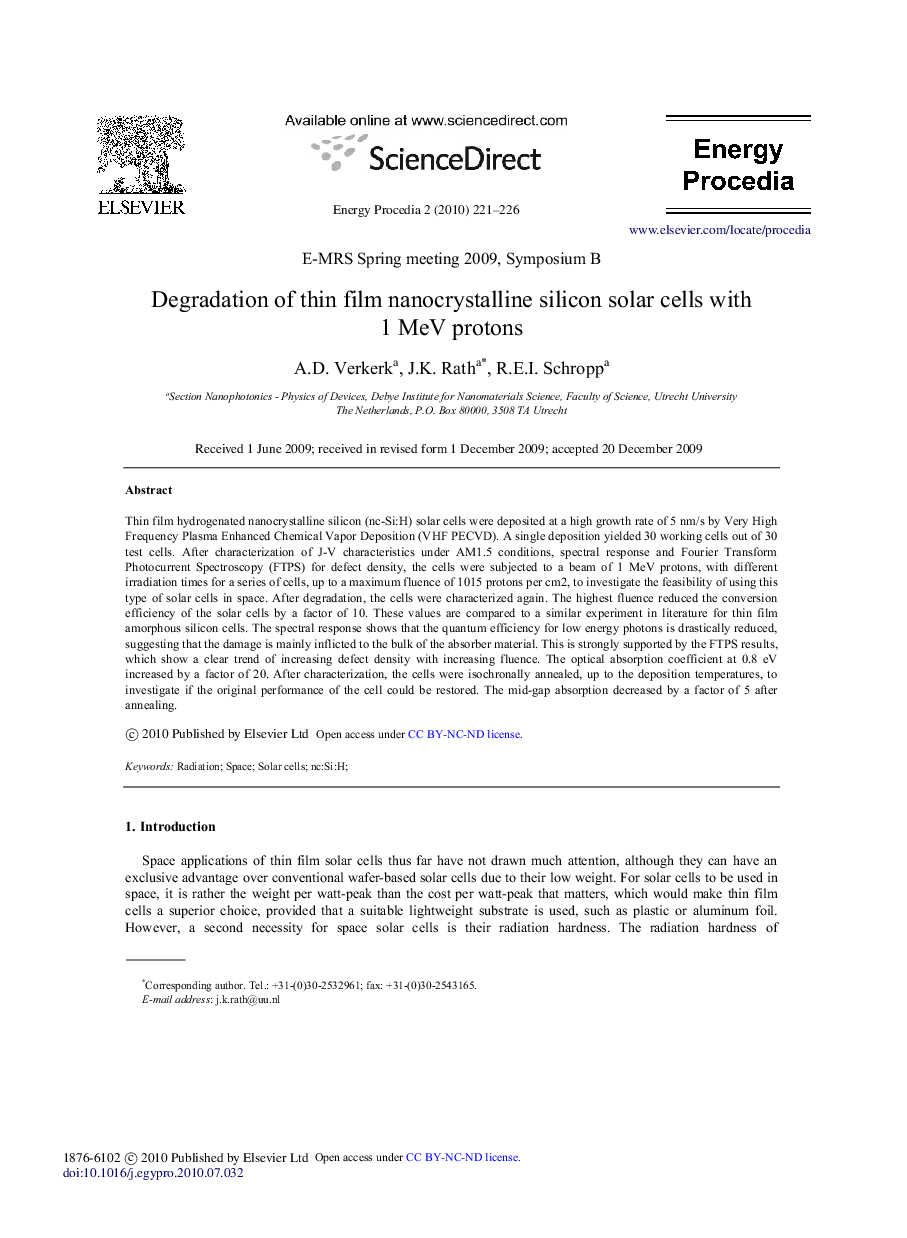| کد مقاله | کد نشریه | سال انتشار | مقاله انگلیسی | نسخه تمام متن |
|---|---|---|---|---|
| 1515095 | 994532 | 2010 | 6 صفحه PDF | دانلود رایگان |

Thin film hydrogenated nanocrystalline silicon (nc-Si:H) solar cells were deposited at a high growth rate of 5 nm/s by Very High Frequency Plasma Enhanced Chemical Vapor Deposition (VHF PECVD). A single deposition yielded 30 working cells out of 30 test cells. After characterization of J-V characteristics under AM1.5 conditions, spectral response and Fourier Transform Photocurrent Spectroscopy (FTPS) for defect density, the cells were subjected to a beam of 1 MeV protons, with different irradiation times for a series of cells, up to a maximum fluence of 1015 protons per cm2, to investigate the feasibility of using this type of solar cells in space. After degradation, the cells were characterized again. The highest fluence reduced the conversion efficiency of the solar cells by a factor of 10. These values are compared to a similar experiment in literature for thin film amorphous silicon cells. The spectral response shows that the quantum efficiency for low energy photons is drastically reduced, suggesting that the damage is mainly inflicted to the bulk of the absorber material. This is strongly supported by the FTPS results, which show a clear trend of increasing defect density with increasing fluence. The optical absorption coefficient at 0.8 eV increased by a factor of 20. After characterization, the cells were isochronally annealed, up to the deposition temperatures, to investigate if the original performance of the cell could be restored. The mid-gap absorption decreased by a factor of 5 after annealing.
Journal: Energy Procedia - Volume 2, Issue 1, August 2010, Pages 221-226